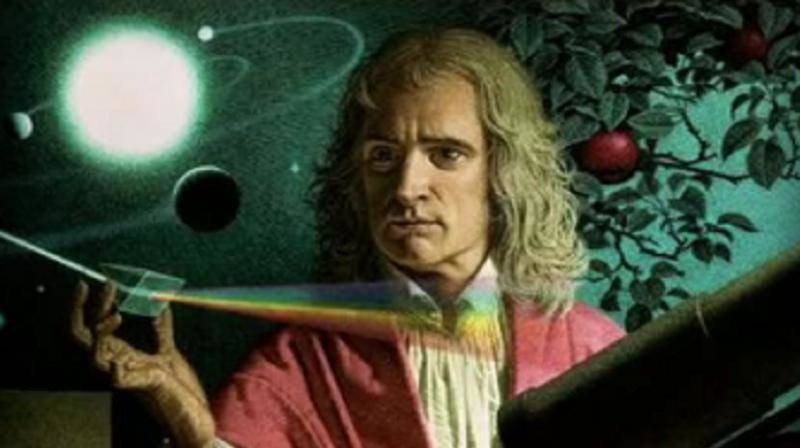Can you imagine a world where nothing ever changes? No one moves. Nothing even stirs. Like a dead, stationary planet.
As soon as there is any motion or any sort of action, some force kicks in. Or, to put it the other way, every force in nature results into some form of action or motion.
Some forces are obvious and some we can just imagine being there. When we pick an object, we need to apply a little force. But why do we need to put in effort to pick an object? Because, there is an invisible force that is pulling the object towards the earth and we need to overcome that force by applying a counterforce. Or when we drive a car, we need to overcome the counterforces of friction and air resistance that pulls us back.

Can you imagine that if there is no friction and no air resistance and if we kick a ball, there will be no reason for the ball to stop and it would go round the earth again and again (assuming that it does not get hit by a tree or something that blocks its way)? Actually, we will need to stand out of its way or else it might hit us from the back 😊
So, one thing is certain. We are dealing with forces all the time and they are all around us and there is no way to escape them (actually, as you would have realized, it’s good that we can’t escape them). So, let us look at how scientists look at them.
What is force?
In physics, force is a push or pull on an object. A force can cause an object to accelerate, slow down, remain in place, or change shape.
How to Measure Force
The unit of measure for force is the newton which is abbreviated as “N”. One newton is the force needed to accelerate one gram of mass by one centimeter per second squared. Other units of force include the dyne and the pound-force.

Examples of force
Force, Mass, and Acceleration
Force can be figured out if you know the mass and acceleration of an object. This equation comes from Newton’s Second Law of Motion:
f = m * a
Where f = force, m = mass, and a = acceleration.
Forces and Vectors
Force not only has a magnitude (which is what we get in newtons when we use the equation above), but it also has a direction. This makes force a vector.
Vector, in physics, a quantity that has both magnitude and direction. It is typically represented by an arrow whose direction is the same as that of the quantity and whose length is proportional to the quantity’s magnitude. Vectors are shown by an arrow that indicates the direction of the force and a number that indicates the magnitude.
Forces in Equilibrium
Sometimes there can be many forces acting on an object, but the object remains still. In this case the forces are in equilibrium. The sum of the forces, or the net force, is zero.
The picture below shows an object sitting on a table. The object isn’t moving. This is because the force of gravity pulling the object down is equal and opposite to the force of the table pushing up. The net force is zero and the forces are in equilibrium.
weight as a force acting on an object

Combined Forces
When multiple forces are acting on an object, the resultant force is the sum of the vectors of the individual forces. We won’t get into complex vector math here, but take for example a tug of war. The two sides are each pulling. If one side is pulling with a force of 2 N in left direction and the other side is pulling with a force of 3 N in the right direction, then the resultant force is 1 N in the right direction.
Some of the forces we encounter
Friction – Friction is a force caused when one object rubs against another. It works in the opposite direction of the main force.
Gravity – Gravity is a force caused by a large body, such as the Earth. Gravity pulls objects toward the Earth with an acceleration of “g” which equals 9.8 m/s2.
Electromagnetic – Electromagnetic force is a force associated with electric and magnetic fields.
Nuclear – Nuclear forces are the forces that hold atoms and their particles together.
Tension – A pulling force that is exerted by a string, cable, or chain on another object.
Elastic – An elastic force is a force exerted by an object trying to return to its natural length. This is modeled by a spring that has been pulled by an external force but is pulling back while trying to return to its original length.
Trivia
Galileo Galilei, an Italian scientist, was born before Newton and he is often called “the father of modern physics” and “the father of modern science.”
Newton’s first law of motion was based on Galileo’s formulation of the concept of inertia. Galileo stated that an object in a state of motion possesses an “inertia” that causes it to remain in that state of motion unless an external force acts on it.

Galileo was a supporter of “heliocentrism”, an astronomical model where the Sun is the center of the solar system with the Earth and other planets revolving around it.
This was against the prevailing belief at that time that Earth is at the center and everything revolves around it. Church was opposed to Galileo’s findings and found them blasphemous and put him under house arrest for eight years during the later portion of his life. His period of house arrest occurred between 1634 and 1642, during which time he wrote a book before becoming blind. The book contained the summary of his life’s work, science of motion and strengths of materials. He named the book – “Two New Sciences.”

